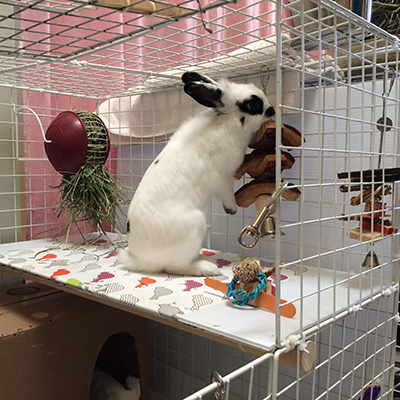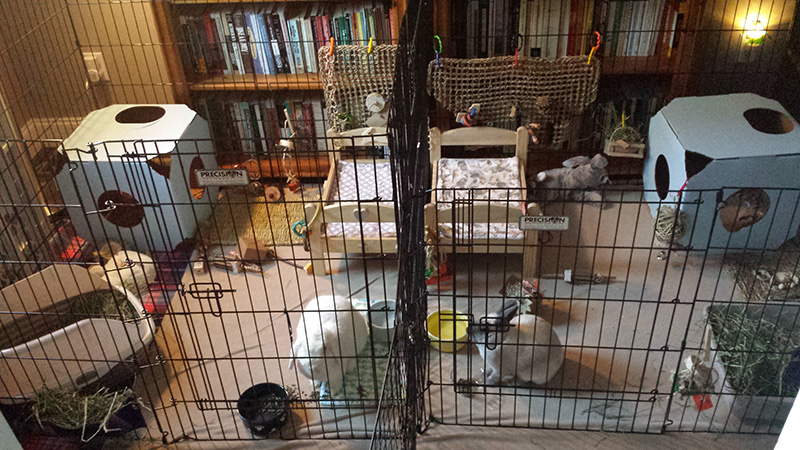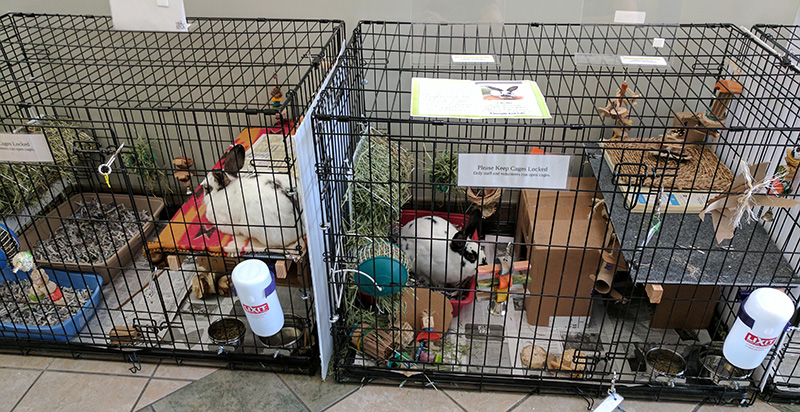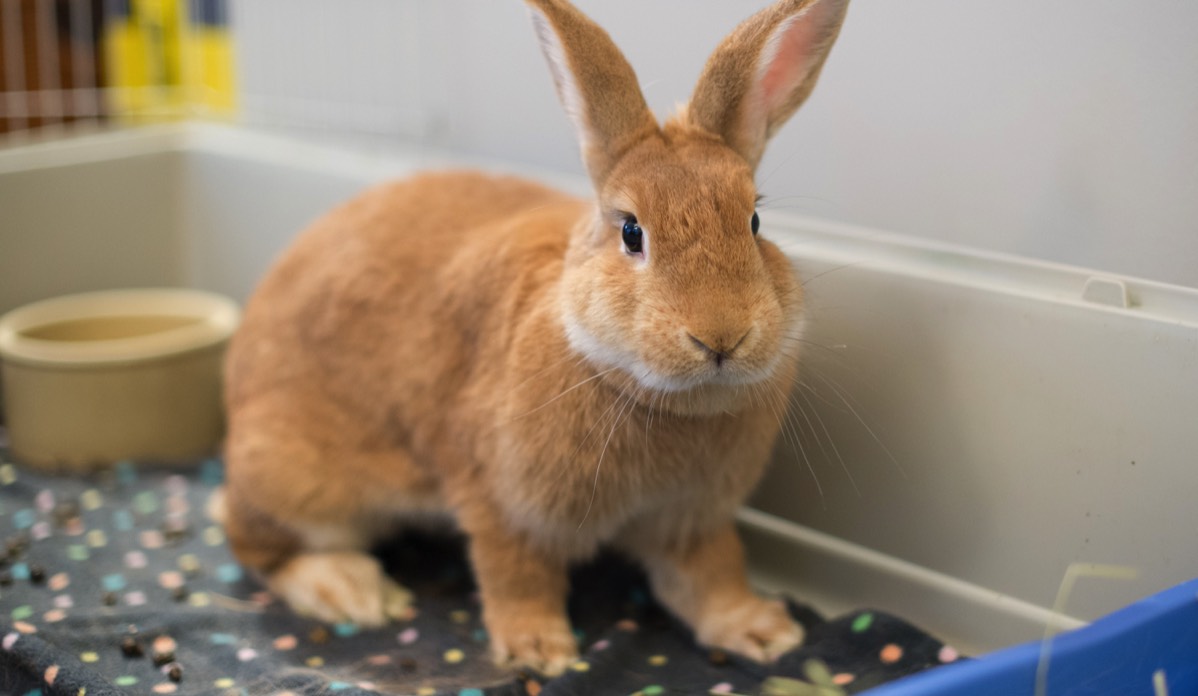
Love it or Leave it? Ideas for bunny housing
Sunday, March 3, 2019
by Becky Lembo and Jeanette Lyerly
One of the most common questions that we are asked is, “what is the best type of housing for my bunny?” Fortunately, there are many easy, budget-friendly alternatives to store-bought cages that can be modified to best suit your home – and your bunny. After all, most bunny families know that their bunny thinks that s/he is the best decorator.
 Bunny Basics
Bunny Basics
There are several important items to include in your bunny’s enclosure, keeping in mind that a four-pound bunny needs a minimum of eight square feet (and a separate space to run around and play). This space should allow your rabbit to be able to stretch out and rest. Your bunny’s home base should include a large, rectangular litter box that are sold most commonly for cats. Food and water bowls are also essentials; water bowls, instead of or in addition to water bottles, are strongly recommended as a four-pound bunny drinks about 20 ounces of water a day. It’s also important for your bunny to have a place to hide, such as a cardboard box with an entry and exit. Since bunnies love to chew, their cardboard home provides enrichment, and they should also have a few different types of toys, such as seagrass mats, phone books, and bunny-safe hanging and toss toys.
Rabbit housing we’d love
Exercise pens
Exercise pens are not just for dogs! They make great rabbit enclosures, and are an economical choice. Pens have plenty of space for all the things a bunny needs, provide room to stretch out, and are much less expensive than many store bought rabbit cages. They come in a variety of heights, and you can even get a top for them if your bunny is an olympic jumper. Pens are great for humans, too, because they are easy to clean. Simply fold up the pen, sweep or vacuum, and then return everything to its place. Wire exercise pens are not the only option for pen living. You can find pens with solid or hard plastic panels, create your own pen using wire storage cubes and zip ties, or build your own from wood.

Condos
Condos, like those manufactured by Leith Petwerks, can be good rabbit housing for families with limited floor space. The shelves and ramps provide extra room for bunny, and there is still plenty of space for all their supplies and toys. Many rabbits enjoy the view from the upper levels. Look for a condo with a door on each level for easier cleaning. Condos can be purchased online, or if you are handy you can build your own.
Dog crates with shelves
Many people don’t think about dog crates, but they are an easy option for bunny housing. The large and extra large crates (42-inch and 48-inch) have enough room for all of bunny’s things, and it’s easy to swap out the blanket or pad and sanitize the floor. Crates also provide an enclosed space, and are a good choice for rabbits who are jumpers and need a roof to head off bunny shenanigans, or for rabbits who may live in a home with other pets. Dog crates are also tall enough to add a shelf, which provides extra space to stretch out and be comfy. Add even more living area by attaching an exercise pen to create a secure play area.

Rabbit housing we’d leave
In spite of all of these great alternatives, many products marketed for rabbits in the pet store are either unsafe or unsuitable for rabbits to live comfortably. Traditional store-bought cages tend to be ¼ to ½ the minimum recommended size and can cost up to twice the price of an x-pen or large dog crate. Many of these cages are also flimsy; the bars tend to rust and plastic bottoms tend to break and need replacement within a year or two of purchase. Similarly, the triangular plastic litter-boxes meant to fit in the corner of the cage tend to cost as much as a large cat pan, but are made of much skimpier plastics and are half the size. These pans are not large enough for most adult rabbits. One way to litter-box train your rabbit is to place hay in half the litter box and litter in the other half, so the large cat litter pans work well for that (and may end up being a napping spot for your bunny).
DIY enclosures need to be made with caution: shaggy carpet should be covered, as they make a great “toy” for bunnies to rip up! And while ceramic tiles are wonderful to keep one in the corner to cool down bunny on hot days, you should avoid flooring the entire area with tiles or slippery materials or cover them with a low-pile throw rug, blanket, or grass mats.
Final thoughts on rabbit housing
The perfect bunny housing can vary with each rabbit, and each family. It’s important to find the right enclosure for your rabbit, and for you. There are lots of great options beyond small, traditional cages that give bunny the space s/he needs and are economical, easy to clean, and fit in your home.


 Bunny Basics
Bunny Basics